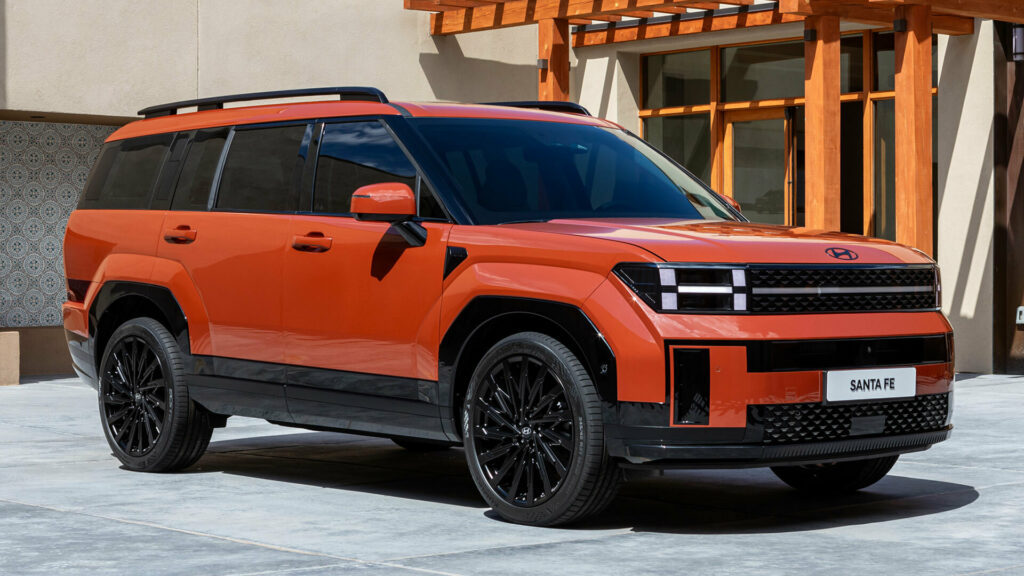The Los Angeles Auto Show kicks off on November 16 and Hyundai will use the event to introduce the US-spec Santa Fe.
Set to arrive at dealerships in the first half of 2024, the redesigned crossover will follow in the footsteps of the Korean variant which was introduced this summer. As a result, the model will adopt a boxy design with sharp lines, pronounced fender flares, and distinctive lighting units with H-shaped graphics.
Besides the bold new look, the 2024 Santa Fe is larger than its predecessor as the model measures 190.2 inches (4,830 mm) long and has a wheelbase that spans 110.8 inches (2,815 mm). Those are increases of 1.8 and 1.9 inches (46 and 48 mm), respectively.
More: 2024 Hyundai Santa Fe Gets Detailed And Joined By New XRT Concept
While the exterior design will likely have some detractors, the cabin is an undisputed home run. We’ll learn full details next week, but we can expect a 12.3-inch digital instrument cluster, a 12.3-inch infotainment system, and a 6.6-inch display for climate controls. They should be joined by a dual wireless smartphone charger, a digital rearview mirror, and a “bilateral multi-console storage space that can be opened by both front and rear passengers.”
Speaking of the latter, second-row passengers will find up to 1.4 inches (35 mm) of additional legroom. Third-row occupants will enjoy best-in-class headroom as well as an extra 0.6 inches (15 mm) of legroom.
We can also expect an extensive list of driver assistance systems including Forward Collision-Avoidance Assist, Lane Following Assist, Highway Driving Assist, and Smart Cruise Control. They should be joined by Remote Smart Parking Assist, Rear Cross-Traffic Collision-Avoidance Assist, Safe Exit Assist, and a Surround View Monitor. The Santa Fe will also become the first Hyundai in America to have a driver monitoring system, which “analyzes a driver’s vital signs to help ensure safe driving.”
Hyundai has already confirmed the US-spec model will be offered with two different engines including a turbocharged 2.5-liter four-cylinder that produces 277 hp (207 kW / 281 PS) and 311 lb-ft (422 Nm) of torque. It will be joined by a hybridized 1.6-liter turbo with 178 hp (132 kW / 180 PS) and 195 lb-ft (265 Nm) of torque.

































